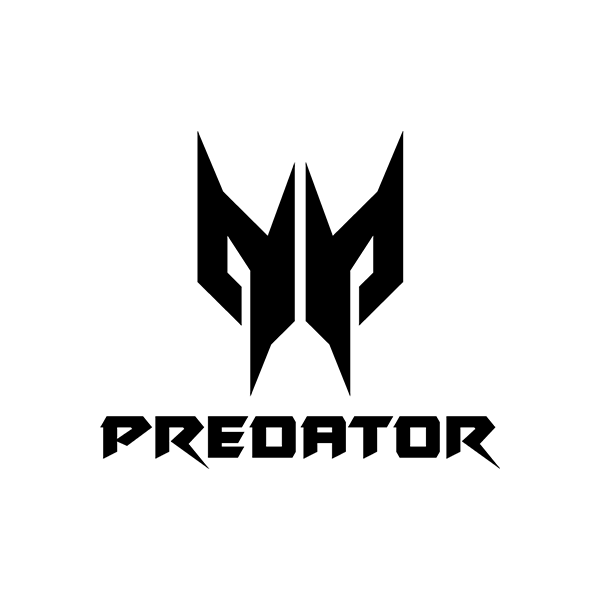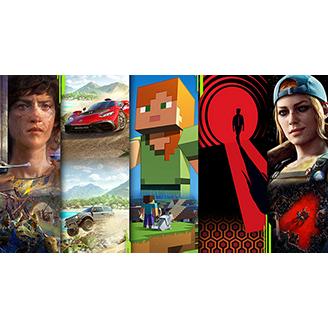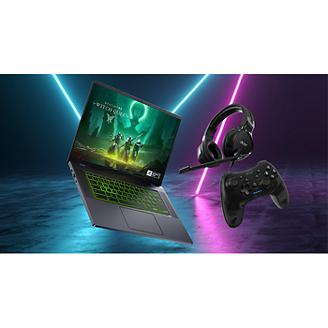-
Why You Should Remove Image Metadata Before Sharing Photos and How to Do It
Before you upload your next photo, join us to discover why you should remove the hidden image metadata inside it, and how to clean it safely on Windows 11 or with dedicated tools. It may sound like the stuff of spy movies, but there really is a bundle of info hidden inside each and every image file.
Image metadata often includes exact GPS coordinates of where the image was taken, when it was taken, and even the device used! While this info can be useful for organizing your photo library, it may reveal more about you than you’re comfortable with. Don’t panic, stick with us and learn how to view and remove image metadata to protect your privacy when you share photos online.
What is image metadata?
As we mentioned above, image metadata is the hidden info stored in a photo file. This invisible information is automatically embedded in every photo you take on digital devices. The most common standard is EXIF metadata, which stores details of the date and time the photo was taken, as well as the camera model, shutter speed, ISO, and even lens type. Your smartphone likely also records GPS coordinates, which can be used to pinpoint the exact spot where an image was captured.
If you edit your own photos, then editing software can add additional metadata like color profiles and copyright info. While metadata is undeniably useful for organizing your library and supporting editing workflows, it can also reveal more than you intend. Let’s take a closer look at why removing image metadata before sharing your photos is a wise move.
Why remove image metadata?
Privacy and safety are the primary reasons you should remove image metadata before posting your photos online! GPS data reveals locations like your home, office, or even your kid’s school. Add timestamps to this, and metadata becomes a potent cocktail of information that can hand stalkers or other nefarious individuals' way more insight into your life than you ever intended to share.
On top of personal privacy, removing metadata should be a part of your digital hygiene regime. Every unnecessary detail you share online increases your digital footprint, so removing metadata aligns with today’s cybersecurity best practices. Even if you’ve got no enemies, and you want the world to see your photos, you’re better off preserving a stroke of anonymity by removing metadata.
When you should wipe your image's properties
Many popular platforms including Facebook and Instagram strip most EXIF data, including GPS metadata (location) when photos are uploaded. While this data may be automatically stripped before posting, platforms may preserve metadata internally. We recommend that any image you post publicly, send to strangers, or use in sensitive contexts (marketplace, public groups) should be cleansed of metadata before uploading. Remember as well that other methods of sending data such as messaging apps, email, cloud albums, and AirDrop don’t wipe metadata from images.
When not to worry about metadata
Photos stored privately on your devices or cloud accounts don’t need to have their metadata wiped. If you’re sharing images in trusted private chats like family WhatsApp groups then don’t worry about metadata. But remember, if someone forwards your photo to a nefarious individual, the metadata you left in the file will travel with it.
Let’s not forget that metadata is actually intended to help photographers access image info. Metadata provides valuable information including camera settings. On top of this, it helps users organize their photo albums by time and location, and marks RAW images that require metadata for editing.
How to see image metadata on Windows 11
Before you strip your images of all their metadata, it helps to know exactly what information your photo is carrying. Thankfully Windows 11 makes it easy to view a file’s metadata directly from File Explorer:
* Right-click the photo file in File Explorer.
* Select Properties.
* Open the Details tab.
* You’ll see fields such as:* Date taken
* Camera model
* Software
* Dimensions and resolution
* GPS coordinates (if present)
How to remove metadata from images on Windows 11
Once you’ve deciphered what your photos reveal, removing the metadata is simple. Windows 11 includes a built-in tool that lets you remove sensitive details in a few clicks, as follows:
* Right-click the image
* Select Properties
* Open the Details tab.
* Select Remove Properties and Personal Information at the bottom.
* You can choose:* Create a copy with all possible metadata removed, or
* Remove the following properties from this file and select all or individual fields to delete (date taken, camera model, GPS).
* Windows can remove most metadata from JPEG and PNG files, but RAW formats (.CR2, .NEF, .ARW) may require specialized tools.
Other tools to remove metadata
A simple internet search will offer endless websites and tools offering to find and remove the metadata from your images. So, if you crave even more control over what your images reveal, a range of metadata cleaning tools can help you discover, edit, or wipe image metadata before sharing. These apps go beyond Windows 11’s built-in options, providing deeper customization options and stronger privacy protection.
ExifTool (Windows/macOS/Linux). The golden standard for metadata removal, this cross-platform, powerful, fast, flexible and customizable command-line tool offers complete metadata inspection and removal. Preferred choice of technical users, security pros, and photographers, ExifTool by Phil Harvey helps users read, write and edit meta information.
GIMP (Windows/macOS/Linux). Bring out GIMP, the free and open source GNU image manipulation program that’s been around for 30 years. As well as editing image metadata, GIMP can be tasked with photo retouching, image composition and image authoring.
Photo Exif Editor to view, edit or remove EXIF metadata (including GPS) from their photos. iOS users may want to check out Exif Metadata to swiftly and easily view, edit and remove image metadata.
Mind your metadata
We hope you’ve enjoyed discovering why you should remove image metadata before sharing photos. It really is a small step that delivers a huge boost to your digital privacy. If you’re sharing photos on social media or posting listings online, stripping metadata ensures you only share what you intend to, and nothing more.
With a few easy clicks, Windows 11’s built-in tools and other metadata-cleaning apps can protect you and your family. In a connected world where every meta detail matters, keeping the photos you share online metadata-free is one of the easiest ways to stay in control and secure.
Recommended Products
Acer Swift Edge 14 AI
Buy Now
Acer Aspire 14 AI
Buy Now
Acer Swift Go 14
Buy Now
-
Why RAM Prices Are Surging in 2025: What’s Really Driving the Spike
Memory prices have risen sharply in 2025, surprising PC builders, laptop shoppers, and companies that depend on predictable hardware costs. DDR4 and DDR5 modules cost far more than they did just a year ago, and the increases show no sign of slowing. What looks like a simple shortage is actually the result of deeper structural changes across the semiconductor industry.
This article explains what is happening, why it is happening, who is feeling the impact, how long the situation may last, and what consumers and businesses can do now.
What is happening to RAM prices in 2025?
RAM prices have climbed across every major category. DDR4, DDR5, LPDDR5 for mobile devices, and even server-class memory have all become more expensive. In many regions, consumer-grade memory kits now cost two or even three times more than they did in 2023 or early 2024.
At the same time, memory availability is inconsistent. Retailers report that high-speed kits sell out faster. Laptop manufacturers are facing higher bill-of-materials costs. Even large enterprise buyers have reported partial fulfillment of bulk memory orders.
In short, demand for memory remains high, supply remains tight, and the market has shifted in favor of suppliers.
Why RAM has become so expensive this year
RAM prices have surged in 2025 because demand for advanced memory has grown much faster than supply can keep up. Industry data shows how dramatic this shift has been. TrendForce reports that many DDR5 modules have increased by 120 to 200 percent compared with early 2025, while broader DRAM pricing indexes have climbed nearly 50 percent year to date. Certain contract prices for memory chips have also risen by 30 to 60 percent in only a few months. These increases reveal how tight the market has become across consumer, mobile, and server segments.
Several forces are driving the spike:
1. AI demand is consuming the memory supply
The rise of artificial intelligence is the single biggest driver behind the shortage. Modern AI data centers rely heavily on high bandwidth memory, or HBM. This stacked, ultra-fast memory is essential for training and running large models. Since HBM relies on the same foundational materials as DDR4 and DDR5, manufacturers are shifting their capacity toward HBM because it offers higher revenue and long-term demand certainty.
When production capacity shifts toward HBM, fewer wafers and fewer fabrication lines are left for standard DRAM.
2. Wafers are limited and expensive
All DRAM begins with 300 mm semiconductor wafers. These wafers are expensive, difficult to produce, and available only from a few global suppliers. As AI companies place massive long-term orders, wafer supply becomes stretched.
A limited wafer supply creates two problems:
* There are not enough wafers to satisfy every DRAM product line.
* The cost of each wafer increases, which raises the baseline cost of all memory.
Even if demand from consumers stayed the same, wafer scarcity alone would push prices upward.
3. Manufacturers are managing supply to protect pricing
For years, the memory market suffered from oversupply, which caused prices to crash. In response, manufacturers adopted a more controlled approach. They now scale production carefully to avoid large inventory buildups. This helps stabilize profits but keeps prices high.
Because all three major DRAM manufacturers are using similar strategies, the market has shifted toward steady, elevated pricing rather than boom-and-bust cycles.
4. DDR4 is being phased out
DDR4 production was already declining as the industry transitioned toward DDR5. With wafer supply under pressure and HBM taking priority, manufacturers have accelerated the phase-out. Fewer DDR4 production lines means lower availability and higher prices, even for older systems.
5. Devices require more memory than before
The rise of AI in consumer devices, the growth of handheld gaming PCs, and new requirements in Windows 11 have all increased memory consumption. Many modern laptops ship with 16 GB or 32 GB. Phones increasingly use more RAM to support on-device AI features.
This growing demand collides with limited supply and pushes prices higher.
6. HBM packaging is slow and difficult
Even if manufacturers wanted to expand HBM production, packaging remains a bottleneck. HBM uses advanced through-silicon vias and stacked layers that require specialized packaging facilities. Only a handful of plants worldwide can perform this work at scale.
Since packaging cannot expand quickly, HBM supply remains tight, which in turn keeps pressure on overall DRAM supply.
Who is being affected by the global DRAM shortage
The current memory market affects almost every part of the technology ecosystem, but in different ways.
1. Consumers building or upgrading PCs
Builders who planned to upgrade from 16 GB to 32 GB, or move to higher speed DDR5 kits, now face much higher costs. Entry-level kits cost more than before, and high-end kits often sell out.
2. Laptop buyers
Laptop manufacturers must absorb higher component costs, and those increases often appear in final retail pricing. Even models with soldered memory are affected because DRAM cost influences the total system cost.
3. Small and mid-sized businesses
Companies that refresh hardware regularly or run memory-intensive workloads face higher upgrade budgets. Even organizations that rely on cloud services may see costs rise because cloud providers are also paying more for memory.
4. Enterprise and data center operators
HBM shortages and server DRAM constraints affect data center expansion plans. Some large customers have reported reduced fulfillment of bulk memory orders, which can delay deployment timelines.
5. Gamers and creative professionals
High performance workloads such as 4K editing, 3D rendering, and modern AAA gaming often require 32 GB or more. Higher memory prices make these upgrades more expensive.
How long high RAM prices are expected to last
Based on current industry conditions, elevated memory prices are likely to persist through all of 2025 and at least into early or mid-2026. Several reasons support this timeline:
* Large AI companies have already placed long-term HBM orders that last several years.
* Wafer production capacity cannot scale quickly because it requires new fabs and new suppliers.
* HBM packaging remains the slowest part of the supply chain.
* The DDR4 phase-out is accelerating, not slowing.
* DRAM manufacturers have no incentive to increase supply faster than demand.
New fabrication facilities in Japan, Taiwan, South Korea, and the United States may help, but most will not reach high-volume output until late 2026 or 2027.
Short-term discounts may appear during sales events, but a major price correction is unlikely in the near future.
What consumers and businesses can do to manage rising memory costs
While the situation is not ideal, there are practical steps that buyers can take to reduce the impact of rising memory prices.
1. Buy sooner rather than later
Prices have trended upward month after month. Delaying upgrades often results in paying more, especially for high-speed DDR5 kits.
2. Consider total system value, not just memory costs
For consumers building PCs, it may be better to choose a more balanced set of components rather than pushing all spending toward memory capacity. Many gaming and productivity workloads still run well with 16 GB or 32 GB, depending on the use case.
3. Take advantage of seasonal sales
Retailers may still offer occasional promotions, especially around major shopping periods. Even modest discounts can matter in a high-price market.
4. Businesses should plan hardware refresh cycles early
Companies that refresh equipment every two to three years should budget for higher DRAM costs. Early procurement can reduce the risk of sudden price jumps.
5. Explore complete systems instead of component upgrades
Sometimes a laptop or desktop with pre-installed memory offers better value than buying memory separately. For users considering a new system, the Acer Store offers desktops, laptops, and workstations with memory configurations that may cost less than separate component upgrades.
Final thoughts
The 2025 memory market reflects a major industry shift driven by AI demand, wafer constraints, controlled production strategies, and rising memory requirements across modern devices. Together, these forces have pushed RAM prices to some of the highest levels seen in recent years.
While supply conditions are expected to improve over time, higher memory pricing is likely to persist throughout the year. For consumers and businesses planning a hardware upgrade, delaying a purchase may result in paying more for comparable performance as component costs continue to climb.
In this environment, buying a pre-configured system can still offer practical value. Although prices have already begun to reflect higher memory costs, gaming desktops and laptops available through the Acer Store have not yet reached the steepest part of the current pricing cycle. Compared with building or upgrading a PC component by component, system pricing remains more predictable as RAM costs continue to trend upward.
Acer’s Nitro and Predator gaming lines are well positioned under these conditions. These systems ship with balanced CPU, GPU, and memory configurations designed to handle modern games and creative workloads out of the box, reducing the need for immediate upgrades. As memory prices rise further throughout 2025, purchasing a complete gaming PC or laptop now can help buyers secure strong performance without absorbing additional component-driven price increases later in the year.
For users considering an upgrade, the current pricing window represents a reasonable opportunity to move before memory costs place further pressure on overall system prices.
Recommended Products
Acer Nitro V 16 (RTX 5060)
Buy Now
Predator Helios Neo 18 AI (RTX 5070Ti)
Buy Now
Predator Helios 18 AI (RTX 5080)
Buy Now
-
How to Change Your OS Language in Windows 11
Changing the language system on a Windows 11 computer is simple once you know where the settings are. Whether you bought a PC overseas, need an extra keyboard for bilingual work, or want to learn a new language, Windows 11 lets you switch your display language with only a few steps. This guide explains how to change Windows language settings, how to download new language packs, and what to do if parts of your PC stay in the original language.
Where to download language packs
Windows 11 includes dozens of language packs, but you need to download them before you can switch your display language. These packs change the interface for menus, notifications, the Start menu, File Explorer, Settings, and more.
Here is how to download a language pack:
* Open Settings.
* Click Time & language on the left.
* Select Language & region.
* Under Preferred languages, click Add a language.
* Search for the language you want.
* Select it and click Next.
* Make sure Language pack is checked.
* Choose any optional features you want, such as:* Language pack
* Text-to-speech
* Speech recognition
* Handwriting
* Click Install.
The download size is usually between 100 MB and 300 MB. Some languages also include speech recognition or handwriting support. You can install these features to improve dictation, voice typing, and pen input.
If your PC is managed by a company or school, you may need administrator permission to add languages.
How to change your OS language in Windows 11
Once the language pack is installed, the next step is to make it your Windows display language. This controls how Windows shows menus, system messages, Settings pages, notifications, and most built-in apps. Changing the display language here is the core step that updates the overall experience across your computer.
Follow these steps:
* Open Settings.
* Select Time and language.
* Choose Language and region.
* Under Windows display language, select the new language from the drop down menu.
* Sign out and sign back in so Windows can apply the changes.
After you sign back in, the interface should appear in the new language. This includes system menus, quick settings, the lock screen, and many built-in apps.
Another option is to change the display language while installing the language pack. When the download screen appears, check Set as my Windows display language before clicking Install.
Why Windows sometimes stays in the original language
Even after you change Windows language settings, it is possible to see parts of your PC still showing the old language. This happens for a few reasons.
1. Missing language features
If the typing tools, handwriting tools, or speech features are not installed, Windows may not change everything.
2. Apps that do not follow system language
Some older desktop apps only support one language and will ignore your settings.
3. System components that need a full restart
Certain parts of Windows only update after a reboot.
4. Microsoft account sync settings
If language preferences are synced across your devices, Windows may switch back to your old language.
5. Region settings do not match your language
A mismatch between your language and region can cause some interface elements to remain unchanged.
6. Windows version limitations
Devices configured with region-locked ISOs or company policies may not allow full language switching.
How to fix language problems in Windows 11
If you still see the old language after switching, try these solutions.
1. Install all language features
Go to Settings → Time and language → Language and region.
Select your language, then open Language options.
Make sure these items are installed:
* Language pack
* Basic typing
* Handwriting
* Speech
2. Set your language as the top priority
Move your new language to the top of the Preferred languages list.
3. Restart your PC
A full restart helps Windows reload system components.
4. Adjust your region settings
In Language and region, make sure Country or region and Regional format match the language you want to use.
5. Turn off language sync
Go to Settings → Accounts → Windows backup. Turn off Remember my preferences, then uncheck Language preferences.
6. Reinstall the language pack
Remove the language and add it back again.
7. Update Windows
Go to Windows Update and install the latest updates. Some language fixes are included in system patches.
Advanced fix: using PowerShell to force Windows to apply the full language pack
If none of the normal methods work, there is an advanced solution discovered by a Reddit user heltonfonias. In some cases, the Settings app installs only a partial version of the language pack, which causes parts of the interface to stay in the original language. This PowerShell method forces Windows to install the complete language pack and then applies it across the entire system, including the welcome screen.
Important warnings
* Only use this method if standard settings do not work.
* You must run PowerShell as Administrator.
* The process may look frozen for up to 20 minutes.
* Back up your important files before making system-wide changes.
* Your PC will restart automatically.
What this method does
* Installs the complete language pack.
* Sets the language as your user display language.
* Applies the language to the system account and welcome screen.
* Forces a system reboot to complete the process.
PowerShell script (advanced users only)
Replace "pt-BR" with the language code you want, such as "en-US" or "fr-FR".
# --- Variables ---
$targetLanguage = "pt-BR" # Replace with your preferred language code
# --- Install the full language pack ---
Install-Language -Language $targetLanguage
# --- Set the Windows display language for the current user ---
Set-WinUserLanguageList $targetLanguage -Force
# --- Apply the language to the system and welcome screen ---
Copy-UserInternationalSettingsToSystem -WelcomeScreen $True
# --- Restart to complete the process ---
Restart-Computer -Force
When this method is useful
Use this script only if:
* Windows Settings installs the language but does not fully switch
* Parts of Windows stay in English or another language
* Your PC was installed using a foreign ISO
* You have tried reinstalling the language pack and restarting without success
For most users, the standard Settings method is enough. This PowerShell option is meant for persistent cases where Windows refuses to change languages properly.
Final thoughts
Changing the display language in Windows 11 is usually quick and simple. Once the language pack is installed, Windows will update menus, system messages, and apps to match your preferred language. If pieces of the interface stay unchanged, adjusting your regional settings, turning off sync, or reinstalling the pack usually solves the problem. For the rare cases where none of these methods work, the advanced PowerShell fix can force Windows to install the full language system and apply it across the entire device.
To learn more about Windows 11 or explore related guides, check out these helpful articles:
* Still using Windows 10? Here is why it is time to switch to Windows 11
* Best budget laptops from Acer that run Windows 11
* 8 ways to personalise your Windows 11 PC
Recommended Products
Acer Swift Edge 14
Buy Now
Acer Aspire 16 AI
Buy Now
Acer Aspire 14 AI
Buy Now
-
Elevate Your Glasses Free 3D Gaming With the Acer SpatialLabs View Pro 27 Monitor
Gamers of the world, join us and experience how the Acer SpatialLabs View Pro 27 monitor unleashes a new era of glasses-free 3D gaming. Step beyond flat 2D visuals and into the next dimension of play with a monitor built to redefine immersion. This isn’t retro 3D. This is a next-generation stereoscopic gaming monitor built for today’s hardware and tomorrow’s experiences.
As it says on the label, a 3D monitor liberates gaming and other pursuits from the banal 2D canvas, enhancing visualization and interaction across the board. Stick with us as we introduce the essentials of SpatialLabs technology, and how it promises to redefine gaming. Once we’ve covered the basics, we’ll check out the Don Corleone of 3D gaming monitors: Acer SpatialLabs View Pro 27.
SpatialLabs technology: 3D, glasses-free
Acer’s SpatialLabs is a next-gen suite of spatial computing solutions, designed to enhance 3D creation, visualization and interaction. Put simply, SpatialLabs delivers glasses-free 3D by harnessing the stereoscopic effect. That’s all very well, we hear you say, but how does glasses-free 3D work?
Acer SpatialLabs View Pro 27 is equipped with a stereoscopic camera that tracks the user's head and eye position. A 2D/3D switchable lenticular lens layered on the 27" Ultra HD (3840 x 2160) 160 Hz display then projects slightly different images to each of your eyes for an immersive 3D experience. The result is glasses-free 3D worlds where very detail jumps out of the screen, blurring the lines between gaming and reality.
SpatialLabs displays redefine gaming by delivering real depth, 3D texture, and effects that pop-out of the screen without bulky 3D glasses, making gaming worlds insanely immersive and lifelike. Add a pinch of AI depth rendering, an advanced AI-driven sound system and you’ll swiftly enter a beyond-real cinematic gaming experience that you won’t soon forget.
https://youtu.be/acmGEovxgEw
What else is it used for?
Aside from gaming, the applications of SpatialLabs technology are pretty diverse, including 3D gaming, entertainment, and real time 3D image and video creation. Other professional uses include engineering and product design, where immersive 3D models can streamline and improve the product development process. And lets not forget our friends in the medical field, especially all the dentists getting onboard with SpatialLabs technology. But let’s get back to gaming!
The revolution starts now
Acer SpatialLabs View Pro 27 is our flagship 27-inch 3D display, crafted to meet the needs of gamers, creators, developers and professionals in all fields. There are a couple of different View 27 displays floating about. Our sights are on the Acer SpatialLabs View Pro 27 Monitor - ASV27-2P, yours to keep for $3,399.99. Let’s take a look at the tech-specs of this delightful display.
* Screen: 27" Ultra HD (3840 x 2160) 160 Hz, Stereoscopic 3D Display
* Max Res: 3840 x 2160, 2K per eye in 3D mode
* Aspect Ratio: 16:9
* Panel Technology: AMD FreeSync™ Premium certified
* Inputs: DisplayPort, HDMI
* Response Time: 5 ms
* Brightness: 400 Nit
* Viewing Angles: 178°
* Monitor Features: 2D/3D Switchable Lenticular Lens; Eye Tracking; SpatialLabs Experience Center Pro
* Audio: 2 x 2.5 W speakers
* Interfaces/Ports: HDMI 2.1 x 1, DisplayPort x 1, USB x 4
* Power Consumption: < 234 Watts (Operating), < 1 Watt (Off-Mode)
* Dimensions: 17.9”-23.8” x 24.7” x 9.7”
* Weigh: 20.7 lbs
Enter the new frontier
As you can see from these enviable tech-specs, this is a 27-inch 4K display ready to deliver the crispest of textures and detailed environments at a rapid 160 Hz refresh rate guaranteed to keep action fluid and fun during fast-paced gameplay. On top of this, low input lag ensures responsiveness is never sacrificed for 3D visuals.
No light, low light, no problem
If you’re a dim-room gamer wondering how these eye tracking cameras are going to see you in your gaming cave, then wonder no more. Acer SpatialLabs View Pro 27 is optimized for extremely low light settings, so no matter how dark you go, 3D depth stays locked to your viewpoint, even if you change position mid-game. 400 Nit brightness ensures that you can see exactly what’s going on on your Acer SpatialLabs View Pro 27 display in low light settings, or complete darkness.
Vision and sound
This display has a Color Gamut Delta E < 2 ensuring beyond accurate visuals for cinematic gaming. If you’re concerned about color consistency as you switch between 2D and 3D, don’t be as the Delta E < 2 Color Gamut protects against the dreaded washed-out depth effect.
Let’s not neglect sound! Acer Immerse Audio is an AI-driven sound system that uses beam forming and head tracking to create an enveloping spatial audio experience. Acer Immerse massively boosts realism in FPS and story-driven games by shifting the audio as you move, perfectly matching every on-screen perspective change in real time.
Gaming, enhanced
At time of writing there are approximately 225 SpatialLabs supported games, with more titles regularly joining the 3D realm. Here’s a taster of some of our favorites:
* Baldur's Gate 3
* Black Myth: Wukong
* Dark Souls III
* Dying Light
* Final Fantasy VII Remake
* Fallout 4
* God of War
* Street Fighter 6
* Tekken 7
If you’re tired of 2D and looking for gaming immersion, then look no further, as this display has everything you need to explore your favorite games in 3D. RPGs, racing, first-person exploration, or even horror titles all benefit from the Acer SpatialLabs View Pro 27 display. Once you’ve seen these worlds in 3D, there’ll be no returning to the drabness of 2D gaming!
Adaptability as standard
The Acer SpatialLabs View Pro 27 display is built with complete flexibility in mind. Whether it’s powering interactive exhibits, classrooms, or gaming dens, the display’s ErgoStand allows easy tilt, swivel, pivot, and height adjustments to suit any setup. Full VESA support for alternative mounting, as well as the option to pair it with a mini PC means that it can be turned into a dynamic, standalone centerpiece in virtually any environment.
The future of immersive gaming
We hope you’ve enjoyed our foray into the immersive world of the Acer SpatialLabs View Pro 27 monitor. Let’s face it, the era of 2D gaming is swiftly drawing to a close, and glasses-free 3D is the natural next step for absorbing gaming experiences.
This is a display that speaks for itself: 4K clarity, 160Hz smoothness, accurate colors, and dynamic AI powered spatial audio, add depth and endless atmosphere to your gameverse. As the library of 3D titles grows, SpatialLabs promises to reshape how gamers experience and interact with their environments. Acer SpatialLabs View Pro 27 monitor delivers a completely new way to play, and a glimpse at where the next generation of immersive 3D PC gaming is headed.
Recommended Articles
27" Acer SpatialLabs View Pro 27 Monitor
Buy Now
15.6" Nitro SpatialLabs View Monitor
Buy Now
Acer Aspire 3D 15 SpatialLabs Edition Laptop
Buy Now
-
How to Increase Your Internet Speed
Improving your internet speed starts with understanding what affects it and what you can do to make it faster. Many people look up how to increase internet speed because their connection feels slow, buffers during streaming, or drops during video calls. The truth is that your provider’s advertised speeds are often the theoretical maximum, not what you get at home every day. Several outside factors can weaken your connection, from old hardware to Wi-Fi interference. In this guide, you will learn why your internet might feel slow, how to test your internet speed, and how you can increase internet speed with simple fixes you can do today. This article covers everything you need, so you will not be left with unanswered questions.
The importance of internet speed
Internet speed affects almost everything you do online. A fast and stable connection makes streaming smoother, downloads quicker, and online games more responsive. It also helps video calls stay clear without lagging or freezing. Even simple tasks like browsing websites feel faster when your connection is strong.
Many homes now have multiple devices connected at the same time. Phones, laptops, tablets, TVs, smart speakers, and gaming consoles all share the same network. If your internet speed is too low, these devices compete for bandwidth and slow each other down. Strong internet speed ensures your entire household can work, study, and relax without interruptions.
Good internet speed also matters for security. When your network struggles, updates may fail to install correctly, leaving your devices exposed. A stable connection keeps everything up to date and working the way it should.
Overall, faster internet improves convenience, productivity, and the quality of your online experience.
Why your internet speed is not always what the provider advertises
Internet providers often promote speeds that represent the highest possible performance under perfect conditions. In reality, most people never see those exact numbers at home. Advertised speeds are based on laboratory-style tests where the connection is wired, isolated, and free from interference. At home, your speed depends on real-world conditions that are rarely ideal.
Another reason for the difference is network congestion. When many people in your area use the internet at the same time, your provider’s network can slow down. This is common during peak hours, such as evenings when everyone is streaming video, downloading files, or gaming online. Even if you pay for a high-speed plan, you share parts of the network with other households.
Your provider may also use “up to” language in your contract. This means they are promising a maximum speed, not a guaranteed one. While this is legally allowed, it often leads customers to expect far more than what their actual setup can deliver.
Finally, the type of connection matters. Fibre connections usually provide speeds close to what is advertised. Cable, DSL, and satellite connections vary more because of distance, line quality, and weather conditions. This is why two people with the same plan can still get different results.
Outside of your provider, what other factors affect your internet speed
Even if your provider delivers the correct speed to your home, many things inside your house can still slow it down. Here are the most common factors:
* Your Wi-Fi router
Older routers may not support faster speeds. Placement also matters. Walls, floors, metal appliances, and furniture can weaken the signal.
* Device limitations
Some devices cannot use faster Wi-Fi bands. For example, many older laptops and phones only support the 2.4 GHz band and not the faster 5 GHz band. If a device cannot connect to 5 GHz, it will stay on the slower band even if your router supports higher speeds. Outdated Wi-Fi chips, old network drivers, and limited hardware can also prevent devices from reaching modern speeds. Background apps and downloads can slow devices even further.
* Signal interference
Microwaves, cordless phones, Bluetooth devices, baby monitors, and neighbours’ Wi-Fi networks can disrupt your signal.
* Distance from the router
Wi-Fi loses strength as you move farther away. Rooms on different floors or behind thick walls often get noticeably slower speeds.
* Wired vs wireless connections
Ethernet cables provide the most stable speeds. Wi-Fi is more convenient but much more affected by distance and interference.
* Software problems
Malware, outdated operating systems, and heavy browser extensions can slow devices and make your connection feel weaker than it actually is.
Understanding internet types and Wi-Fi bands
Your internet speed also depends on the type of connection you have and the Wi-Fi band your devices use. These two factors can create major differences in how fast your home network feels, even if you pay for a high-speed plan.
Types of home internet
Different internet technologies perform very differently in real-world conditions:
* Fibre internet
The fastest and most reliable option. It uses light signals through fibre-optic cables and often delivers speeds close to what your provider advertises.
* Cable internet
Uses the same coaxial cables as cable TV. It can be fast, but speeds may drop during busy hours when many people in your neighbourhood are online.
* DSL internet
Uses old telephone wiring. It is slower than fibre and cable, and speed drops the farther you are from the provider’s service hub.
* Fixed wireless
Provides internet through a wireless signal from a nearby tower. Performance depends on distance, weather, and obstacles.
* Satellite internet
Available almost anywhere, but speed can be limited. Latency is usually higher because the signal travels long distances.
Knowing your connection type helps you understand what speeds you can realistically expect.
2.4 GHz vs 5 GHz vs 6 GHz Wi-Fi bands
Most modern routers offer multiple Wi-Fi bands. Each band has different strengths:
* 2.4 GHz band
Slower but reaches farther. Best for older devices or rooms far from the router. It is also more crowded because many household devices use this frequency.
* 5 GHz band
Much faster but has a shorter range. Ideal for laptops, phones, and smart TVs that are in the same room or nearby. Less interference and better performance for streaming and gaming.
* 6 GHz band (Wi-Fi 6E and Wi-Fi 7)
The fastest option with very low congestion. Works best for devices that support it and perform closest to the router. Great for high-speed downloads, 4K and 8K streaming, and gaming.
Why this matters
If a device only supports the 2.4 GHz band or does not support Wi-Fi 6 or Wi-Fi 6E, it cannot reach the full speed of a modern internet plan. Likewise, even the fastest plan will feel slow on DSL or a dated router.
Choosing the right band and understanding your connection type helps you get the best performance out of your network without guessing.
How to test your internet speed
Testing your internet speed is the easiest way to see what you are actually getting compared to what you are paying for. A simple test can show your download speed, upload speed, and ping. These numbers help you understand whether the problem is with your provider, your home setup, or a specific device.
Start by using a trusted speed test tool. Popular options include Speedtest by Ookla, Fast.com by Netflix, or your internet provider’s own testing page. These tools measure your connection in real time and give results in a few seconds.
Before running the test, make sure to follow these steps for the most accurate results:
* Use a wired Ethernet connection if possible. This removes Wi-Fi interference and shows your true maximum speed.
* If you must use Wi-Fi, stand close to your router. This helps reduce signal loss.
* Close apps and downloads on your device. Background activity can lower your test results and make your internet look slower than it really is.
* Run the test on more than one device. If one device is slow and others are fine, the issue is likely with that device, not your internet service.
* Test at different times of the day. Evening hours often show slower speeds due to network congestion in your area.
When you finish testing, compare your results to the speeds on your internet plan. If the results are much lower than expected across multiple devices and connection types, the issue may be on your provider’s end. If only certain devices or areas of your home are slow, you can focus on fixing your home setup instead.
Tips to help you get faster internet at home
There are several practical steps you can take to improve your internet speed without upgrading your plan. These tips help you reduce interference, strengthen your Wi-Fi signal, and make sure your devices perform at their best.
* Move your router to a better location.
Place it in a central, open area of your home. Avoid corners, closets, and behind large furniture. Higher positions, like on a shelf, often give better coverage.
* Restart your router regularly.
Routers can slow down over time because of memory buildup or minor glitches. Restarting it once every week or two can refresh your connection.
* Use the 5 GHz band when possible.
If your router offers both 2.4 GHz and 5 GHz, switch capable devices to the 5 GHz network. It is faster and less crowded, although it works best at shorter distances.
* Connect important devices with Ethernet.
Gaming consoles, PCs, and smart TVs benefit from a wired connection. Ethernet gives you the fastest and most stable speeds.
* Reduce Wi-Fi interference.
Keep your router away from microwaves, cordless phones, baby monitors, and thick walls. Changing your Wi-Fi channel in the router settings can also help in crowded apartment buildings.
* Update your router’s firmware.
Manufacturers release updates that fix bugs and improve performance. Most routers let you check for updates in the settings menu.
* Upgrade old equipment.
If your router is more than five years old, it may not support modern speeds. Replacing it can instantly improve your network. The same applies to old devices that cannot use faster Wi-Fi standards.
* Limit the number of active devices.
When too many devices are streaming, downloading, or gaming at once, your network slows down. Disconnect devices you are not using.
* Scan your devices for malware.
Malware can secretly use your bandwidth. Regular scans help keep your devices running smoothly.
These steps can make a noticeable difference in your day-to-day internet performance. Combined with proper speed testing and a clear understanding of how your network works, they help you increase internet speed at home without confusion or guesswork.
Conclusion
Improving your internet speed is easier when you understand what affects it. Once you know how to test your connection and identify the real causes of slow performance, you can fix most problems on your own. Router placement, device limitations, signal interference, and outdated hardware all play a major role in how fast your network feels. With the right steps, you can increase internet speed without confusion and make your home connection more reliable for work, streaming, and gaming.
If you want a more powerful and stable network, upgrading your router is one of the most effective changes you can make. Acer offers several strong options for different homes and budgets:
* Acer Predator Connect T7 Wi-Fi 7 Mesh Router: A future-ready mesh system that brings the benefits of Wi-Fi 7, including faster speeds and much lower latency. It is ideal for large homes or anyone who wants the most advanced performance available.
* Acer Connect Vero W6m (Wi-Fi 6E Mesh Router): A high-performance mesh router with Wi-Fi 6E support and strong coverage. It also uses recycled materials, which makes it a good pick for anyone who wants both speed and sustainability.
* Predator Connect W6x Wi-Fi 6 Gaming Router: A fast and reliable Wi-Fi 6 router built for gaming and heavy streaming. It has features that keep ping stable during online play and handle multiple devices without slowing down.
With the right setup and the right hardware, you can enjoy faster internet throughout your home and avoid the everyday frustrations of lag, buffering, and dropped connections.
Recommended Products
Acer Predator Connect T7 Wi-Fi 7 Mesh Router
Buy Now
Acer Connect Vero W6m (Wi-Fi 6E Mesh Router)
Buy Now
Predator Connect W6x Wi-Fi 6 Gaming Router
Buy Now
-
Check Out Acer's Latest Swift Go 16 Laptop with AI Capabilities
Copilot+ PCs like the Acer Swift Go 16 seamlessly integrate AI into the Windows experience, perfectly balancing productivity, style, and innovation, and allowing users to streamline their tasks and work more efficiently.
What is a Copilot+ PC?
Copilot+ delivers a modern twist to the traditional Windows we know and love, with Microsoft calling them the fastest, most intelligent Windows PCs ever built. They include an impressive 40+ TOPS and all-day battery life to support your daily workload on a single charge. Copilot+ PCs boast an all-new high-performance Neural Processing Unit (NPU) and are 20 times more powerful and up to 100 times more efficient at running AI tasks. They are even equipped with enhanced security features to keep users secure at all times. Let’s take a deeper dive into some handy Copilot+ features.
Copilot Chat
Microsoft has introduced its very own AI assistant to help users complete tasks more quickly. Copilot Chat integrates across Microsoft 365 apps and can draft reports, summarize meeting minutes, analyze data, or reword paragraphs, allowing users to focus on other things. Moreover, Copilot Chat also answers questions in simple terms, so users do not need to learn computer jargon or commands.
Recall
Have you ever wanted to find something on your computer but can no longer remember where it is? The Recall feature on Copilot+ PCs lets users quickly locate information they have seen before on their PC using an explorable timeline. Users can even describe how they remember the information in just a few short words, and Recall will retrieve it.
Live captions
Copilot+ PCs can also translate live or video audio into another language in real-time, making it easier for users to work across global teams. This handy feature displays live captions for video calls, meeting recordings, live discussions, or clips without subtitles, and even works offline.
Introducing the Acer Swift Go 16
The Acer Swift Go 16 laptop - SFG16-72T-95Z6 is a solid companion for wherever life takes you. It includes a powerful Intel® Core™ Ultra (Series 2) processor and Copilot+ to effortlessly handle AI tasks and deliver reliable performance for intense work sessions. Let’s take a closer look at its specifications.
Specifications
* Operating System: Windows 11 Home
* Processor Type: Intel® Core™ Ultra 9 185H processor
* Processor Speed: 2.30 GHz (5.10 GHz turbo)
* Processor Core: Hexadeca-core (16 Core™)
* Standard Memory: 16 GB
* SSD Capacity: 1 TB
* Display Screen Technology: LCD
* Screen mode: WUXGA
* Screen Resolution: 1920 x 1200
* Speakers: 2
* Bluetooth: 5.3 or above
* Fingerprint reader: Yes
* Ports: HDMI, USD x 4, Audio line in / out
* Height: 0.59 inches (1.49 cm)
* Width: 14 inches (35.56 cm)
* Depth: 9.6 inches (24.38 cm)
* Weight: 3.53 lb (1.60 kg)
Acer Swift Go 16 features
The Acer Swift Go 16 has everything required to stay connected and productive, so users can focus on getting their tasks done. Here are some more of its impressive features.
1. Light and portable
Weighing just 3.53 lb (1.6 kg), the Acer Swift Go 16 is light enough to carry in a laptop sleeve or backpack on trips and commutes. Moreover, its sleek, ultra-thin design includes a laser-etched cover that opens 180°, giving a touch of class to any look.
2. Built-in AI tools
The Acer Swift Go 16 offers a range of intelligent AI solutions to transform your work style. With built-in Copilot+ that supports creativity and collaboration, and AcerSense™ that lets you access the device’s AI features in one place, the Acer Swift Go 16 is optimized for a user-friendly AI experience. Acer PurifiedVoice™ 2.0 suppresses unwanted background noise, while Acer PurifiedView™ 2.0 delivers razor-sharp resolution and portrait refinement features like automatic framing and gaze correction.
3. Four vivid display configurations
Bring content to life with a WUXGA display resolution of 1920 x 1200 pixels. This provides more screen real estate that is perfect for multitasking, as well as sharper visuals for enhanced precision.
Acer Swift Go 16: the takeaway
The Acer Swift Go is an impressive blend of productivity, cutting-edge technology, and style, while offering built-in AI features as standard. It was also designed with environmentally conscious post-consumer recycled materials, 100% recycled packaging, and responsible manufacturing practices, so you can be kind to the planet as you work. Get yours today on the Acer store, or check out our range of other AI-powered laptops.
Recommended Products
Acer Swift Go 16
Buy Now
Acer Swift 14 AI
Buy Now
Acer Swift X 14
Buy Now








